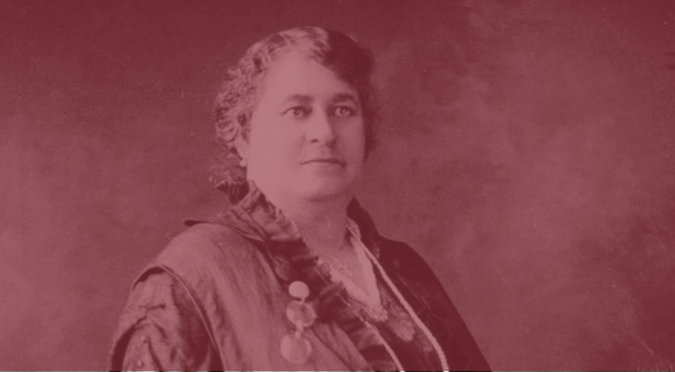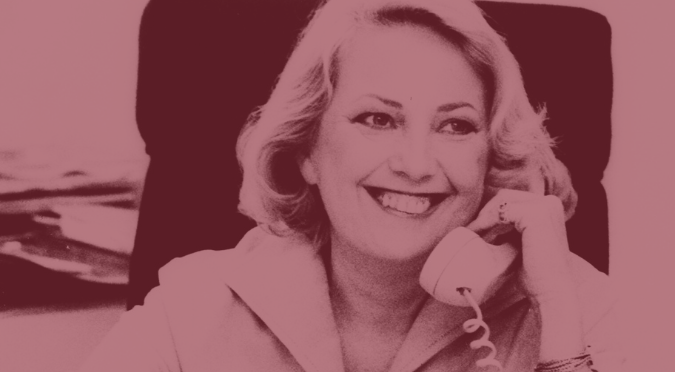This Women’s History Month, we recognize women who broke glass ceilings in the finance and business industries. By shining a spotlight on these four historical figures, we remember all those who paved the way for women in these fields today.
These four historical individuals were bold enough to be the only women in a room of men and to claim financial titles and gain wealth and influence women had not before.
According to the Bureau of Labor Statistics, 52% of financial activities workers in 2021 were women.1 However, there is still work for equal gender representation in finances. According to a report by Deloitte, women only held 21% of C-suite positions in American financial institutions in 2021.2
“Women’s voices need to be heard,” said Senior Vice President of Lending Elizabeth Million of Elevations.
She advised women who are told they can’t work in male-dominated places should take that as motivation. “Don’t tell me I can’t succeed or won’t be of value,” Million said. “When someone says you aren’t valuable, use that as motivation to prove them wrong.”
Million emphasizes the importance of equal gender representation in finance, as women are an under-served population. By supporting one another, women can continue to gain influence in the finance industry.
This month, we celebrate, honor and gain inspiration from these historical women of finance. By recognizing how far we’ve come and honoring the powerful women who shattered gender barriers, we gain inspiration to continue making strides for equality.
Maggie Lena Walker

First woman in America to charter a bank and serve as its president
Maggie Lena Walker founded the St. Luke Penny Savings Bank in 1903. In the segregated South, the bank helped members of the local Black community find economic independence.3
Walker was a child of slaves. Tragically, her father died young, leaving the family at a loss emotionally and financially. She worked as a teacher before later getting involved with the finance world.3
“Let a woman choose her own vocation just as man does his,” she said in a public speech. “Let her go into business, let her make money, let her become independent, if possible, of man.”4
After she had left teaching, she opened a community insurance company for women before founding the St. Louis Penny Savings Bank. Her Black-owned bank grew to 50,000 members and survived the Great Depression while many others collapsed.3
Walker was co-founder of the Richmond chapter of the NAACP and founder of the Richmond Council of Colored Women, which raised money for local causes.5
A political activist, she fought for women’s right to vote and against discrimination and segregation. She organized a boycott against streetcar segregation in Virginia.5
Walker was also a high-level member of the Independent Order of St. Luke’s, an African American organization to help the ill. There, she started publishing the organization’s newspaper, The St. Luke Herald.5
Muriel Siebert

First woman to buy a seat on the New York Stock Exchange
Muriel “Mickie” Siebert was the first woman to buy a seat on the New York Stock Exchange (NYSE). Despite resistance from investors and rules from the NYSE, in 1967, she won a seat and later opened her brokerage, Muriel Siebert & Co., Inc. She spent 10 years as the only woman working with more than 1,000 men on the NYSE.6
“There were no female role models, so I just blazed my own path,” she said.
When she first started in New York finance, Siebert worked on Wall Street. Frustrated by the inequality she experienced and seeking gender pay parity, she set her eyes on the NYSE.6
It took two years to find a man to sponsor her seat and a bank to loan her $300,000 for the seat, which cost $445,000 total. She started Muriel Siebert & Company in 1969 and became New York’s first female superintendent of banking in 1977. After two decades of sitting on the NYSE, the institution finally installed their first women’s restroom. Siebert had threatened to bring in a portable toilet if her request was denied. 8
In 1990, she started the Siebert Entrepreneurial Philanthropic Plan to help buyers give money to charities. Siebert directed the New York City’s Municipal Credit Union, Urban Development Corporation, and Job Development Authority.8
She received 17 honorary doctorates and was inducted into the National Women’s Hall of Fame in 1994. Siebert Hall is the first room in the NYSE to be named after a person.8
Abigail Adams

First female investor in America
Abigail Adams used stocks and bonds to grow her family’s finances, saying it was “money which I call mine” when it was legally her husband’s.9
Abigail Adams was the wife of President John Adams and mother of President John Quincy Adams. She was the first First Lady to live in the White House.9
She was an adviser to her husband, John Adams, at a time when women could not vote or run for office and educated herself through her family’s library at a time when women’s access to education was restricted.9
Adams is renowned for the letters she wrote to her husband. In one particularly well-known letter, she asked her husband to ensure the Founding Fathers “remember the ladies.” She said, “Do not put such unlimited power into the hands of the husbands. Remember all men would be tyrants if they could.”10
She went on to warn that if women would not be considered in the new America, they would rebel. “If particular care and attention is not paid to the ladies, we are determined to foment a rebellion and will not hold ourselves bound by any laws in which we have no voice or representation,” Adams wrote.10
Adams fought for women’s rights, including a woman’s right to education, and opposed slavery.
Ursula Burns

The first Black woman to run a Fortune 500 company
Ursula Burns was CEO of Xerox from 2009-2016, where she started as an intern in 1981.11
Raised in a New York City housing project by a single, immigrant mother, Burns attended a private high school before earning a bachelor’s in mechanical engineering from present-day New York University.11
She calls the state-created scholarship program that sent her there “essential” in that it kept her from graduating with $80,000 in debt. Burns then received her master’s in engineering by attending a scholarship program for minorities from Xerox. The scholarship included a summer internship at the company.11
Burns continued as a full-time employee, then gradually worked her way up engineering positions until she became vice president of global manufacturing and, eventually, CEO.11
At a time when the company was struggling with declining revenue, she helped Xerox expand to rely more on services and was not just copiers. Burns stepped down in 2016 after Xerox split into the new Xerox and Conduent. 12
During her tenure as CEO, she was also a member of the President’s Export Council.14 Burns also helped found Change the Equation, a non-profit led by CEOs and launched by the Obama administration to increase STEM education. She now provides leadership counseling to organizations including MIT and the U.S. Olympic Committee.13
People often declared to Burns that she must be a genius, assuming that is the only way she could be a CEO as a black woman. She said, “I’m not amazing. I’m here because I’m as good as you.”15
Celebrating Women’s Progress
During the month of March, we recognize these four women among others who made strides for gender equality in the financial industry.
“Women really need to support other women,” Million said. “It’s important to close gender and diversity gaps in the finance industry. The broader representation we have in finances, the greater we can be of assistance.”
In addition to recognizing these women in finance, we encourage you to support women-owned businesses, including those that Downtown Boulder lists.
Sources
- Bureau of Labor Statistics, 2023. https://www.bls.gov/opub/reports/womens-databook/2022/home.htm#:~:text=(See%20table%2012.),and%20hospitality%20(50.9%20percent).
- “Advancing more women leaders in financial services: A global report,” Deloitte, 2022. https://www2.deloitte.com/xe/en/insights/industry/financial-services/gender-diversity-in-global-financial-services.html
- “Maggie Lena Walker,” Women’s History, 2017. https://www.womenshistory.org/education-resources/biographies/maggie-lena-walker
- “Memorable Quotes from Maggie Lena Walker,” National Parks Service. https://www.nps.gov/mawa/learn/historyculture/memorable-quotes-from-maggie-l-walker.htm.
- “Maggie Lena Walker,” Encyclopedia Virginia. https://encyclopediavirginia.org/entries/walker-maggie-lena-1864-1934/#:~:text=Maggie%20Lena%20Walker%20was%20an,Penny%20Savings%20Bank%20in%20Richmond
- Hayes, Adam, “Who Was Muriel Siebert?” Investopedia, 2023. https://www.investopedia.com/terms/m/muriel-siebert.asp.
- “Muriel Siebert Quotes,” Quotewise.com.
- Alexander, Kerri Lee, “Muriel Siebert,” National Women’s History Museum, 2020. https://www.womenshistory.org/education-resources/biographies/muriel-siebert.
- “Abigail Adams: Remember the Ladies,” Federal Reserve Bank of Atlanta, 2022. https://www.atlantafed.org/blogs/take-on-payments/2022/03/28/abigail-adams–remember-the-ladies.
- Michaels, Debra, PhD, “Abigail Smith Adams,” National Women’s History Museum, 2015. https://www.womenshistory.org/education-resources/biographies/abigail-adams.
- “Ursula M. Burns: The first African American Woman CEO of a Fortune 500 company,” Black Business Ventures Association. https://www.blackventures.org/blog/black%20founders/2022/06/01/ursula-m-burns-the-first-african-american-woman-ceo-of-a-fortune-500-company/#:~:text=Ursula%20is%20an%20American%20Business,of%20a%20Fortune%20500%20company.
- “Ursula Burns,” Forbes. https://www.forbes.com/profile/ursula-burns/?sh=c6bcb6a40a0e.
- “Ursula Burns,” Columbia University in the City of New York. https://blackhistory.news.columbia.edu/mipeople/ursula-burns
- Nolen, Jeanette, “Ursula Burns,” Britannica. https://www.britannica.com/biography/Ursula-Burns.
- Ignatius, Adi, “’I’m Here Because I’m As Good As You,’” Harvard Business Review, 2021. https://hbr.org/2021/07/im-here-because-im-as-good-as-you.


